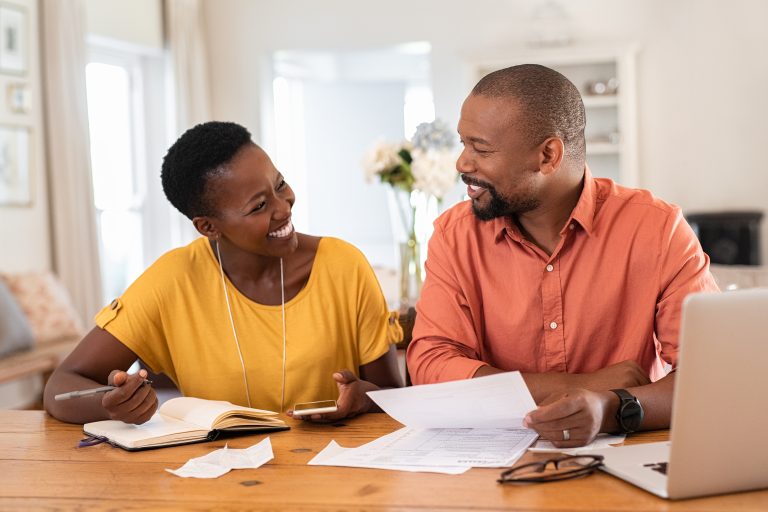According to a 2021 CNBC report, the average American has $90,460 in debt, including credit cards, personal loans, mortgages, and student loans. Getting out of debt can be a challenge, especially if you’re not regularly seeing significant changes as you’re paying them off. There are two main strategic ways consumers can tackle debt repair: the snowball method and the avalanche method.
Some haven’t heard of either, and those who have are unsure which one is better. Before choosing which will work best for you, you must understand what each debt repair method entails and what you can expect each to look like for you.
What Is the Best Way to Pay Off Debt?
What is the debt snowball method, and how does it work?
The focus of the snowball method is to pay off the smallest debt as quickly as possible.
You continue paying the minimum payments on all other balances owed but allocate as much as possible towards the smallest debt. Then, once you pay off the smallest, you roll the money you were putting towards the now paid off debt into the next smallest debt.
For instance, let’s say you have the following debt:
- Credit card balance: $1,200 Minimum payment: $48
- Car loan: $14,000 Minimum payment: $300
- Student loan: $6,000 Minimum payment: $150
In this scenario, your smallest amount owed would be the credit card, followed by the student loan and then the car loan. You would continue paying the minimum payment on the student and car loans while putting extra money towards the credit card.
Say you contribute an additional $100 to the account on top of the monthly payment. Once you pay off the credit card, you would roll over the $148 ($48 minimum payment and $100 of additional funds) to the student loan payment on top of the minimum of $150. This means you would be contributing $298 to your student loan after eliminating the credit card debt.
The process would continue rolling over until all the debt gets settled.
To use the snowball method, you must first list all the debts you owe, including the monthly payment information, the total amount owed, and the due dates.
You can then sort your list from smallest to the largest monetary amount owed and determine how much extra you can afford to put toward the minimum payment each month. Remember, you must continue paying the minimum on every debt to protect your credit. Don’t forget to include that in your budget when determining how much additional you can add to the monthly payments.
Then, as you eliminate your first debt, roll over that contribution into the next smallest debt.
What is the debt avalanche method, and how does it work?
Rather than paying the smallest debt, the avalanche method prioritizes paying off the debt carrying the highest interest rate. It works similarly to the “snowball method” where payments are rolled over to the next highest interest rate debt.
By addressing those with the highest interest rates first, this method helps pay off debt while paying less in interest over time.
For example, using the same figures as before, if you carry the following:
- Credit card balance: $1,200 with 13% APR and a minimum payment of $48
- Car loan: $14,000 with 2.5% APR and a minimum payment of $300
- Student loan: $6,000 with 6% APR and a minimum payment of $150
With “avalanche method” you focus on the credit card balance, followed by the student loan, and then the car loan. To utilize this method, you list your debts, including payment information, total amount owed, minimum monthly payments, and due dates.
Arrange your list from the debt with the highest interest rate down to the lowest interest rate. You budget for extra funds to pay off highest interest debt first. While you continue paying the minimum payment on the others. As you pay off a debt, you put those funds toward the next highest interest debt and continue until it all gets paid.
Pros and cons of the snowball debt repair method
Without a sense of progress, it is easy to become discouraged and stop prioritizing paying off your debt.
This hunger for self-gratification plays into one of the most significant advantages of the snowball method – fast results. Since you prioritize the smallest debt first, it doesn’t take long to pay it off entirely. Seeing results not long after starting helps you follow through with the plan.
The primary drawback of this method is that it can be more expensive in the long run since you prioritize the balances over the interest rates.
Advantages and disadvantages of the avalanche debt repair method
Since the debts with the highest interest rates get eliminated first, this method can save you hundreds or even thousands in interest payments.
Additionally, those with large debts may be able to repay them faster using the avalanche method.
The downside to this method is that you do not receive that same emotional benefit and motivation. It doesn’t feel as good because it can take longer to see results and pay off your first debt. It requires more discipline to stick to, and won’t be as effective if you slack off on your additional contributions.
Which debt repair method is better?
Determining which method is best depends solely on if you prefer the better financial or psychological option.
If you are looking to save money and possibly time, paying off your debt, the avalanche method would be preferable.
In contrast, if you prefer fast progress and need encouragement to continue, a snowball method might work best.
What method you choose depends heavily on your personality and situation.
Ultimately, considering you stick to it, either option you choose will get you well on your way to becoming debt-free.







